
Bond Ball Mill Grindability Test. The test determines the Bond Ball Mill Work Index which is used with Bond's Third Theory of Comminution to calculate net power requirements*. Various correction factors may have to be applied. W = Wi (10/√P 10/√F) Where W = Net power consumption in kWh/t Wi = Bond work index (either Imperial or Metric ...
WhatsApp: +86 18838072829
A mill is a device, often a structure, machine or kitchen appliance, that breaks solid materials into smaller pieces by grinding, crushing, or cutting. Such comminution is an important unit operation in many are many different types of mills and many types of materials processed in them. Historically mills were powered by hand or by animals (, via a hand crank), working ...
WhatsApp: +86 18838072829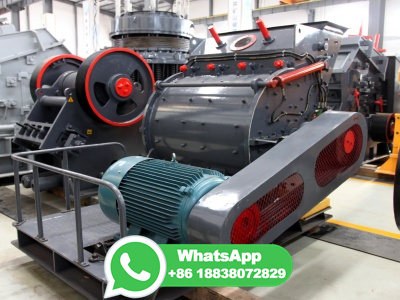
The laboratory procedure for running a Bond ball mill work index test requires that the operator choose a closing screen sieve size. The instruction is to choose a sieve size that results in the ...
WhatsApp: +86 18838072829
MenéndezAguado et al. examined the possibility of determining the work index in a Denver laboratory batch ball mill with the same inner diameter as the Bond ball standard mill. The research was performed on the size class of 100% − mm using samples of gypsum, celestite, feldspar, clinker, limestone, fluorite, and copper slag.
WhatsApp: +86 18838072829
BOND BALL MILL GRINDABILITY LABORATORY PROCEDURE Prepare sample to 6 mesh by stage crushing and screening. Determine Screen Analysis Determine Bulk Density Lbs/Ft 3 Calculate weight of material charge Material Charge (gms) = Bulk Density (Lbs/Ft 3) x 700 cc/ Lbs/Ft 3 Material charge = Bulk Wt. (gm/lit.) x 700 cc/1000
WhatsApp: +86 18838072829
In addition, they indicate that the Bond ball mill work index is equal to kWh/ton, which corresponds to a mineral with the presence of chalcopyrite. The rheological characterization related results indicate that all actual and labcreated mineralslurries exhibit a shear thinning rheological behavior. These results also show that, because ...
WhatsApp: +86 18838072829
In downscaling the Bond ball mill grindability test, the principle was to keep the impact effects similar in the Bond and in a smaller mill (Table 4). Therefore ball sizes and their size distribution was kept constant. The total ball charge was defined by keeping the ball charge filling fixed (19%). The target was to minimize the sample size ...
WhatsApp: +86 18838072829
The Ball mill work index is the final Bond work index, applicable to the size range of ball milling (very roughly: from mm to about 75 µm; yes, it overlaps the Rod Mill Wi range). More on ...
WhatsApp: +86 18838072829
Bij de bond werken circa 60 professionals die zich inspannen voor ± 403 verenigingen, 43 startgemeenschappen en circa leden. Koninklijke Nederlandse Zwembond (KNZB) | 4,556 followers on ...
WhatsApp: +86 18838072829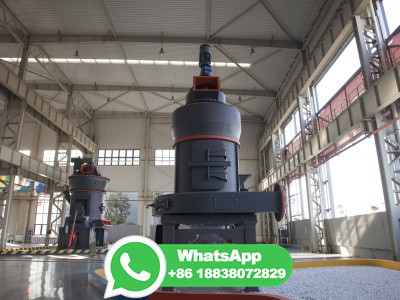
The Bond Ball Mill Grindability Test is a lockedcycle laboratory grinding test. It provides the Bond Ball Mill Work Index which expresses the resistance of a material to ball milling. This Index is widely used in the mineral industry for comparing the resistance of different materials to ball milling, for estimating the energy
WhatsApp: +86 18838072829
Bond Grindability Index Test Ball Mill US 16,000 A Bond Ball Mill, 12" x 12" of fabricated construction comes with electric motor and gear reducer drive, digital counter, jogging button to provide positioning of drum for loading and unloading, emergency stop button, 44 ½ lb ball charge, stand and receiving pan.
WhatsApp: +86 18838072829
The Bond Ball Mill Grindability test is designed to give a measure of the grinding characteristics of a material by finding the amount of size reduction resulting from a controlled energy input. Ball Mill Grindability of a material depends upon its hardness, structure, the manner in which it is fractured.
WhatsApp: +86 18838072829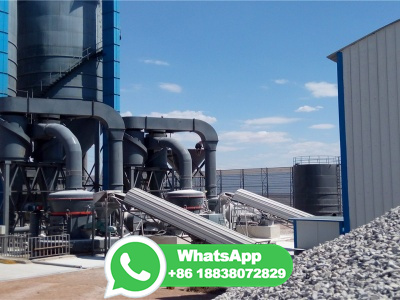
The present investigation involves the identify the physical properties of three different types of iron ores by using Bond ball mill. The result shows that the maximum Bond work index of 14 KWh/mt was obtained for 'A' type iron ore sample. The Bond work index for 'B' and 'C' type iron ore sample are of 11 and 10 KWh/mt.
WhatsApp: +86 18838072829
This sample is ground in a Bond ball mill for an arbitrary number of revolutions (N1 = 50, 100, or 150 revolutions). Afterwards, the grinding product is sieved at P100 and R (retained weight, g) and D (undersize weight, g) are determined. The undersize weight D is the sum of the undersize in the fresh feed Du (g) and the newly formed undersize ...
WhatsApp: +86 18838072829
in a Bond ball mill for, 1, 2, 4, and 8 min. After each grinding cycle, the grinding product PSD is determined and returned to the mill for the subsequent grinding cycle.
WhatsApp: +86 18838072829
Bond Ball Mill Standard Test The procedure to carry out the Bond grindability test [1,18] is described below. The test is performed in the socalled Bond's standard ball mill, a laboratory mill 1200 1200, running at 70 rpm (BICO, San Francisco, CA, USA) with rounded inner edges and without lifters.
WhatsApp: +86 18838072829
The FC Bond Work Index Test Ball Mill was designed by F. C. Bond for use in determining the Bond Index, a measure of grindability and power required for grinding applications. The FC Bond Mills are used in laboratories throughout the world.
WhatsApp: +86 18838072829
In the paper proposed by García et al. [5], a deep study on the Bond ballmill and Bond rodmill standard tests is shown with different ores. The most impacting result of this work is the ...
WhatsApp: +86 18838072829
The F. Bond ball mill We continue to consider the methods of grinding process planning based on the calculations of different energy indexes. In this article, we are going to consider the methodology for calculating index, which has a direct impact on the choice of SAG mills when engineering the grinding process. ВWi is the ball grinding work index. It is used to calculate the energy input ...
WhatsApp: +86 18838072829
The mill is scaled down with a coefficient of twothirds from the standard Bond ball mill. Therefore, it requires smaller amounts of sample and the test is done faster. View.
WhatsApp: +86 18838072829
For overflow ball mills, the charge should not exceed 45% of the mill volume . For grate discharge mills, the charge should occupy about 50% of the mill volume . Bond developed a relationship that can be used to determine the percent charge by volume as a function of the vertical height above the charge, He, and the radius of the mill, R,,
WhatsApp: +86 18838072829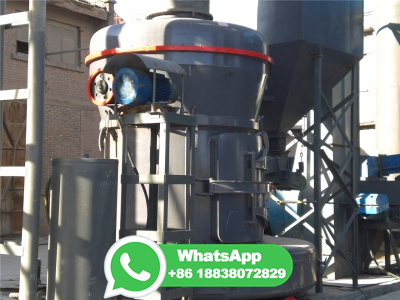
A Bond Ball Mill Work Index test is a standard test for determining the ball mill work index of a sample of ore. It was developed by Fred Bond in 1952 and modified in 1961 (JKMRC CO., 2006). This index is widely used in the mineral industry for comparing the resistance of different materials to ball milling, for estimating the energy required ...
WhatsApp: +86 18838072829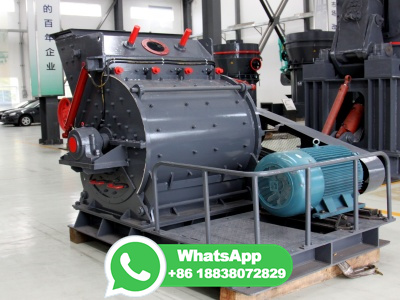
These experiments were run based the Bond Ball Mill Grindability Test. The main difference that was being investigated was the impact of using a testing mill with a 4inchX8inch hand hole door in ...
WhatsApp: +86 18838072829
See other industries within the Manufacturing sector: Aerospace Product and Parts Manufacturing, Agriculture, Construction, and Mining Machinery Manufacturing, Alumina and Aluminum Production and Processing, Animal Food Manufacturing, Animal Slaughtering and Processing, Apparel Accessories and Other Apparel Manufacturing, Apparel Knitting Mills, Architectural and Structural Metals ...
WhatsApp: +86 18838072829
Based on his work, this formula can be derived for ball diameter sizing and selection: Dm <= 6 (log dk) * d^ where D m = the diameter of the singlesized balls in = the diameter of the largest chunks of ore in the mill feed in mm. dk = the P90 or fineness of the finished product in microns (um)with this the finished product is ...
WhatsApp: +86 18838072829
The Bond ball mill work index (Wi BM, or BWi) conducted from a feed size of approximately 2 mm to a product size on the order of 100 µm. The Bond rod mill work index (Wi RM, or RWi) conducted from a feed size of approximately 10 mm to a product size on the order of 1 mm. The Bond crushing (impact) work index (Wi C, CWi, LEIT or IWi) conducted ...
WhatsApp: +86 18838072829
The ball mill grindability test is used for describing ore hardness and it is so widespread that the Bond Work Index generated from the test is often referred to as an ore characteristic. The...
WhatsApp: +86 18838072829
The standard Bond ball mill test requires a material of appropriate granulometric composition, 100% − mm created by a stagecrushing process, which is ground in a ball mill. A small number of very brittle ores can naturally generate very fine sizes, in spite of being correctly prepared. Levin (1989) proposed a method for determining the ...
WhatsApp: +86 18838072829
Ball Mills or Rod Mills in a complete range of sizes up to 10′ diameter x 20′ long, offer features of operation and convertibility to meet your exact needs. They may be used for pulverizing and either wet or dry grinding systems. ... (Bond, 1961; Rowland and Kjos, 1978), relates to: 1) Rod milling a rod mill with a diameter of ...
WhatsApp: +86 18838072829
The Bond ball mill grinding apparatus is widely available at laboratories around the world and practitioners have come up with other metrics that can be generated using the same apparatus. Two of the more common examples are the Levin test (Levin, 1989) used to investigate fine grinding of ores, and the Mib value used in the ...
WhatsApp: +86 18838072829
The basic parameters used in ball mill design (power calculations), rod mill or any tumbling mill sizing are; material to be ground, characteristics, Bond Work Index, bulk density, specific density, desired mill tonnage capacity DTPH, operating % solids or pulp density, feed size as F80 and maximum 'chunk size', product size as P80 and maximum a...
WhatsApp: +86 18838072829
The Bond ball mill grindability test is run in a laboratory until a circulating load of 250% is developed. It provides the Bond Ball Mill Work Index which expresses the resistance of material to ball milling.
WhatsApp: +86 18838072829
Description. XMGQΦ305 Grinding Bond Ball (Rod) Mill is mainly applied for testing the grinding work index of the material of every kinds of ores, slag, etc. Under the specific rotation speed for dry grinding, then screening the products, weighing, repeat operation several times, getting the grinding work index kWh/t.
WhatsApp: +86 18838072829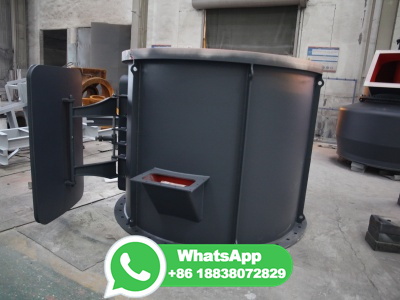
The reason for this variation in ball mill work index is because the ore at Mt. Milligan has an intrinsic exponent of in the 100 µm to 200 µm size range, not the exponent empirically measured by F. Bond. The work index increase between 100 µm and 76 µm is due to a porphyritic grain size that causes a spike in energy
WhatsApp: +86 18838072829